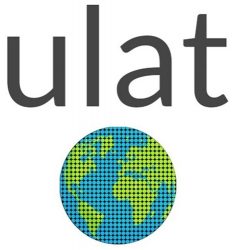Below you will see the entire list of the three years of tests found within the ULAT program. First, here are the symbols that represent each type of test:
= Multiple Choice Test
= Oral Test
= Written Test
= Oral Presentation
= Written Presentation
Spanish Testing Table of Contents
Click on the images below to go to their corresponding tests.
Shortcuts to ULAT Units
UNIT 1
1.4 Present Simple Conjugation
1.4 Present Simple Conjugation
1.6 Negation and question formation
1.8 Vocabulary for the first verb
1.9 Present simple conjugation
1.10 Vocabulary for Verbs 2 – 5
1.12 Vocabulary for Verbs 6 – 11
1.12 Vocabulary for Verbs 6 – 11
1.16 Negation and question formation
1.16 Negation and question formation
1.20 Vocabulary for Verbs 12 – 23
1.20 Vocabulary for Verbs 12 – 23
1.23 Vocabulary and definite and indefinite articles
1.25 Vocabulary and articles with verbs 24-32
1.25 Vocabulary and articles with verbs 24-32
1.31 Vocabulary for Verbs 33 – 44
1.34 The difference between “saber” and “conocer”
1.35 Verbs 1 – 44 in context – Part 2
1.37 Verbs 53 – 60 and supplementary vocabulary
1.38 Vocabulary and articles with Verbs 45 – 60
1.38 Vocabulary and articles with Verbs 45 – 60
1.39 Language Pals activity and test on Verbs 1 – 60
1.40 Verbs 1 – 60 in context – Part 3
1.44 Present simple conjugation with Verbs 12 – 23
1.46 Present simple conjugation with Verbs 35 – 45
1.48 Present simple conjugation with Verbs 54 – 60
1.48 Present simple conjugation with Verbs 54 – 60
Shortcuts to ULAT Units
UNIT 2
2.2 Drills with interrogatives
2.2 Drills with interrogatives
2.9 Oral summary of the first reading selection
2.10 The alphabet and written questions concerning the first reading selection
2.12 Conjugation of daily routine verbs
2.12 Conjugation of daily routine verbs
2.15 Expressing time and one’s daily routine and the specificity of articles and adjectives of quantity
2.16 Drilling the expression of one’s daily routine
2.16 Drilling the expression of one’s daily routine
2.18 Language Pals: Discussing your mutual weekly routines
2.20 Drilling the present progressive tense
2.21 Alphabet review and numbers to 9,999
2.21 Alphabet review and numbers to 9,999
2.23 Drilling modals and the near future
2.23 Drilling modals and the near future
2.24 Professions, modals and the verb “to be”
2.25 Phonics review and practice reading aloud
2.28 Oral summary of the second reading selection
Shortcuts to ULAT Units
UNIT 3
3.4 Drilling adjectives of physical description and emotion
3.4 Drilling adjectives of physical description and emotion
3.5 Sentences with multiple adjectives
3.9 Health and physical condition
3.10 The vocabulary of family relationships
3.11 Phonics review and reading aloud
3.14 Summary activity describing self and others
3.16 Possessive adjectives and family relationships
3.16 Drills with possessive adjectives
3.19 Demonstrative and possessive pronouns
Shortcuts to ULAT Units
UNIT 4
4.9 Alternative means of negation
4.11 Synonyms of Verbs nos. 24 – 60
4.12 Food preparation (cookies)
4.14 Food preparation (pancakes)
4.15 Expressing the concept of “some”
4.17 Food preparation (sausages)
4.20 Food vocabulary (beverages and condiments) with emphasizers and clarifiers
4.21 Cooking and food vocabulary review and the verb “to use”
4.22 Cooking and tablesetting vocabulary review
Shortcuts to ULAT Units
UNIT 5
5.6 Present simple verb conjugation with Verbs 1 – 32
5.9 Present simple verb conjugation with Daily Routine Verbs
5.10 Question formation and negation
5.11 Specificity of articles and adjectives of quantity
5.13 Language Pal letter no. 1 (self-presentation)
5.16 Present progressive tense
5.20 Oral summary of the Richardsons 1
5.21 Expressing one’s daily routine
5.23 The Richardson Family – Part 2
5.25 “What makes a good father and a good mother?”
5.26 Interpersonal relationships and problem-solving vocabulary
5.28 Language Pal letter no. 2 (daily routine)
5.30 Adjective agreement and the verb “to be”
5.36 Miscellaneous sentence structures
5.40 Demonstrative adjectives and pronouns
5.41 Language Pal letter no. 3 (describing a friend or family member)
5.44 Describing the exterior of a house
5.45 Vocabulary of the interior of a house
5.46 Giving a tour of your home
5.47 Household chores and expressing frequency
Shortcuts to ULAT Units
UNIT 6
6.8 Stores, shops, institutions and the passive use of the reflexive pronoun “se”
6.13 Simple past with Verbs 12 – 22
6.13 Simple past with Verbs 12 – 22
6.15 Simple past with Verbs 34 – 44
6.18 Simple past with Daily Routine Verbs
6.19 Using time expressions and “for”, “since”, “during” and “ago” to express one’s personal history
6.20 Simple past regarding one’s daily routine
6.21 Irregular simple past forms
6.23 Indirect object pronouns 2
6.26 Direct and indirect object pronouns
6.26 Direct and indirect object pronouns
6.29 Object pronouns in commands
6.31 Verb tense and object pronoun review
6.31 Verb tense and object pronoun review
Shortcuts to ULAT Units
UNIT 7
7.2 Comparatives and superlatives
7.2 Comparatives and superlatives
7.4 Countries, nationalities and languages
7.18 Imperfect vs.simple past tense
7.18 Imperfect vs.simple past tense
7.19 Multiple verb tense review
7.21 Overview of the imperfect tense
Shortcuts to ULAT Units
UNIT 8
8.17 “If” clauses and the conditional
Shortcuts to ULAT Units
UNIT 9
9.11 Preterite for one’s personal history
9.14 Object pronouns and the imperative mood
9.15 Comparatives and superlatives
9.21 Using tools and the passive voice
9.22 Yardwork and physical activity
9.31 “If” clauses and the conditional mood
9.32 Review of verb tenses and moods
Shortcuts to ULAT Units
UNIT 10
WRITING AN AUTOBIOGRAPHY
10.3 “My Father” (pre-WWII): vocabulary and written summary
10.6 “My Father” (war years): vocabulary
10.9 “My Father” (end of the war): vocabulary, written summary, student’s autobiographical writing
10.14 “My Childhood”: vocabulary, written summary, student’s autobiographical writing
10.16 Vocabulary useful in writing compositions
10.19 “My Adolescence”: vocabulary, written summary, student’s autobiographical writing
10.22 “First influence: Mel Correll” (Sunday School teacher): vocabulary, written summary, student’s autobiographical writing
10.25 “Second influence: Tom Villemure” (basketball coach): vocabulary, written summary, student’s autobiographical writing
10.28 “Third influence: Flex” (high school study program): vocabulary, written summary, student’s autobiographical writing
10.29 “My Future”: student’s autobiographical writing
GOSPEL OF LUKE
10.1 Luke 1: vocabulary, written summary and question response
10.2 Luke 2: vocabulary, written summary and question response
10.3 Luke 3: vocabulary, written summary and question response
10.4 Luke 4: vocabulary, written summary and question response
10.7 Luke 5: vocabulary, written summary and question response
10.8 Luke 6: vocabulary, written summary and question response
10.9 Luke 7: vocabulary, written summary and question response
10.10 Luke 8: vocabulary, written summary and question response
10.11 Luke 9: vocabulary, written summary and question response
10.12 Luke 10: vocabulary, written summary and question response
10.13 Luke 11: vocabulary, written summary and question response
10.14 Luke 12: vocabulary, written summary and question response
10.16 Vocabulary useful in writing compositions
10.17 Luke 13: vocabulary, written summary and question response
10.18 Luke 14: vocabulary, written summary and question response
10.19 Luke 15: vocabulary, written summary and question response
10.20 Luke 16: vocabulary, written summary and question response
10.21 Luke 17: vocabulary, written summary and question response
10.22 Luke 18: vocabulary, written summary and question response
10.23 Luke 19: vocabulary, written summary and question response
10.24 Luke 20: vocabulary, written summary and question response
10.25 Luke 21: vocabulary, written summary and question response
10.27 Luke 22: vocabulary, written summary and question response
10.28 Luke 23: vocabulary, written summary and question response
10.29 Luke 24: vocabulary, written summary and question response

